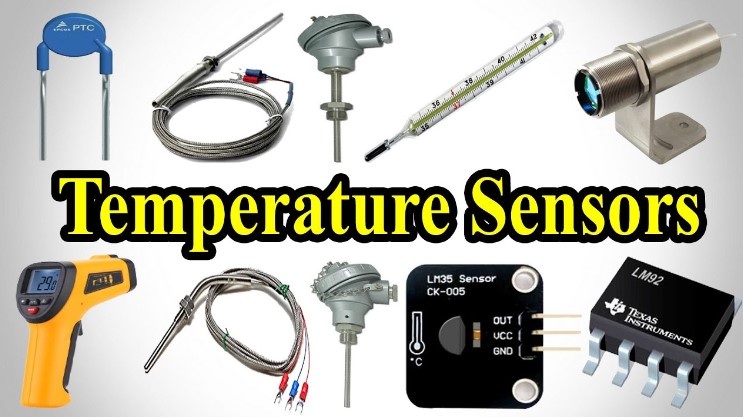Thermocouples are temperature measurement sensors that consist of two different metals that are linked at one end to form a hot junction and an open wire end that acts as a cold junction. The hot junction is in touch with the process. Due to the difference in electron densities of the two different metals and the temperature difference between the cold end and the hot end, an EMF is created at the cold junction when the measurement point, or hot junction, is heated. To attain the maximum thermoelectric voltages, thermocouple elements are constructed of metals with material-specific electronegativities. According to IEC 60584, thermocouples come in class 1 and class 2, as well as some standard and special classes in accordance with ASTME230.

Types of temperature measurement sensors
The thermocouple range from Tempsens comprises:
- Temperature measurement sensor, thermocouple made of basic metal with thermowells.
- Thermocouples from MI.
- Thermocouple made of noble metal.
- Thermocouple made of ceramic.
- Unique thermocouples in a range of designs
MI Thermocouples
MgO (Magnesium Oxide) thermocouples, also known as mineral insulated thermocouples, are employed in a variety of process and laboratory applications. They come in a wide range of sheath diameters and materials, as well as all thermocouple element types. MI thermocouples are a well-liked option for a variety of temperature measurement sensor applications due to their robust and flexible nature, as well as their relatively high-temperature ratings.
Noble Metal Thermocouples
The production of noble metal thermocouples uses valuable metals like platinum and rhodium. The thermocouple element must be protected by a ceramic tube when using a noble metal thermocouple. Typically, these are employed in high-temperature applications.
Refractory Thermocouples
Flammable metal Tungsten and rhenium are rare metals used to make thermocouples. These metals of temperature measurement sensors are pricy, challenging to produce, and fragile. These are employed in decreasing or vacuuming atmospheres or high-temperature environments.
Resistance Temperature Detector (RTD)
RTDs are temperature measurement sensors that gauge a body’s temperature using the resistance/temperature relationship of a substance. RTDs are more accurate and stable than thermocouples, often in the range of temperatures under 600 °C. The actual material used in resistance temperature sensors is typically copper, nickel, or platinum, which exhibits resistance at a particular temperature. An RTD is the best option if we want to monitor temperature accurately because it has good linear properties over a large temperature range. Components are also available at 0°C with resistances of 200, 500, and 1000. These RTDs are referred to as PT200, PT500, and PT1000, respectively. These types of temperature coefficients have similar temperature coefficients to the PT100, but they provide more resistance change per degree Celsius, which results in higher resolution.
Mineral Insulated RTDs
Platinum-measuring resistors Pt100 to DIN IEC 751 are used in the construction of mineral-insulated resistance thermometers. To create a hermetically sealed assembly, the measuring resistor will be linked to the inner conductors, implanted, and encircled by the metal sheath.
Special RTDs
- RTDs for Bearing & DG systems with slide shoe bearings that are vibration-proof
- RTDs Handheld & Probe for Motor & Transformer Winding Temperature in Various Designs
- RTDs with Thermowells Strap on RTDs that have been authorized for nuclear application
- High Temperature RTDs up to 1/10 DIN Semi Standard PRTs calibrated at Fixed Points Appropriate for Autoclave Thermocouple and RTD Validation up to 661°C
Thermowells
The probe is protected and can be removed from the thermowell without compromising the liquid seal because it is a tube that is closed at one end. To meet application needs, a wide variety of materials and styles are available. The highest pressure ratings are provided by thermowells as temperature measurement sensors drilled from solid bar stock, while welded variants are also available.
- Metal thermowells with Ceramic, PTFE, PVDF, PFA, Starlite, and Tungsten Carbide Coatings
- Solid Tungsten Carbide Sintered
- Nitride-bonded and recrystallized silicon carbide
- Silver Thimble
- Tantalum Tungsten (Ta10W), Titanium, and Nickel Cladding Alloy Silicon Nitride Graphite
- On request, additional materials in a variety of sizes
Thermocouples made of base metal with thermowells and protection tubes
Base metal thermocouple types are made of widely available, low-cost metals like nickel, iron, and copper. The most often used types of temperature measurement sensors belong to this group and are types E, J, K, N, and T. Know more by visiting the website of Tempsens.
